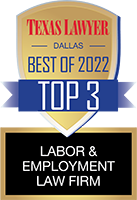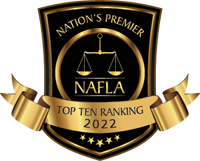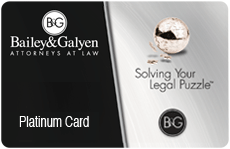The Consequences of Favoring One Creditor Over Another
 You’re struggling to make ends meet, whether you’ve lost your job, been forced to take a less lucrative position because of COVID, had an unanticipated injury or illness or been a party to a divorce. You see no reasonable prospects for turning things around short of filing for protection under the bankruptcy laws. Maybe you’ve had to borrow money from family or friends and you don’t want to see them suffer the ill consequences of a bankruptcy filing, so you’re considering paying them off first, then filing your petition. Don’t do it!
You’re struggling to make ends meet, whether you’ve lost your job, been forced to take a less lucrative position because of COVID, had an unanticipated injury or illness or been a party to a divorce. You see no reasonable prospects for turning things around short of filing for protection under the bankruptcy laws. Maybe you’ve had to borrow money from family or friends and you don’t want to see them suffer the ill consequences of a bankruptcy filing, so you’re considering paying them off first, then filing your petition. Don’t do it!
What Is a Preference in Bankruptcy?
While the bankruptcy laws are intended to help you get a fresh start, they are also set up to ensure that all of your similarly situated creditors have an equal chance of recovering some portion of what is due to them. The bankruptcy law specifically identifies certain types of payments made in the months before a filing to be “preferential” and, therefore, prohibited. The law also establishes a process whereby any payments considered to be preferential can be recovered by the bankruptcy trustee and become part of the bankruptcy estate, available to all creditors.
What Payments Are Considered Preferences?
When evaluating whether a payment made prior to a bankruptcy filing was preferential, the bankruptcy court will typically look first at the status of the party receiving the payment. Payments made to “general” creditors have what is referred to as a “90 day look-back period.” That means the court will only include payments made within three months of the bankruptcy filing as potentially preferential. Furthermore, the amount of the payment must exceed $600 and it must be more than the creditor would have received through the bankruptcy proceeding.
If, however, the party to whom payment was made is deemed to be an “insider,” including a friend, family member, business associate or other special creditor, the look-back period can be extended to one full year.
A payment that falls within the definition of a preference can be recovered by the bankruptcy trustee, whether intentionally made by the debtor or obtained by the creditor through other legal means. For example, if a creditor seeks garnishment that fits the definition of a preference, the bankruptcy court can legally recover those funds and return them to the bankruptcy estate. If, however, there’s evidence that the debtor intentionally made preferential payments to defraud certain creditors, the debtor may face criminal sanctions.
A trustee has up to two years from the date of the filing of a bankruptcy petition to seek the return of preferential payments, using a legal process known as the “clawback” provision. Creditors can challenge the efforts of the court to recover alleged preferential payments, arguing:
- The payments were made in the “ordinary course of business”
- The payment made by the debtor was for something new, known as a “contemporaneous exchange of new value”
Contact the Proven Bankruptcy Attorneys at Bailey & Galyen
At the law office of Bailey & Galyen, we offer a free initial consultation to every client. To learn how our experienced consumer bankruptcy lawyers can help you get a fresh start , contact us by e-mail or 844-402-2992 at one of the convenient locations listed below. We will take your call 24 hours a day, seven days a week.








